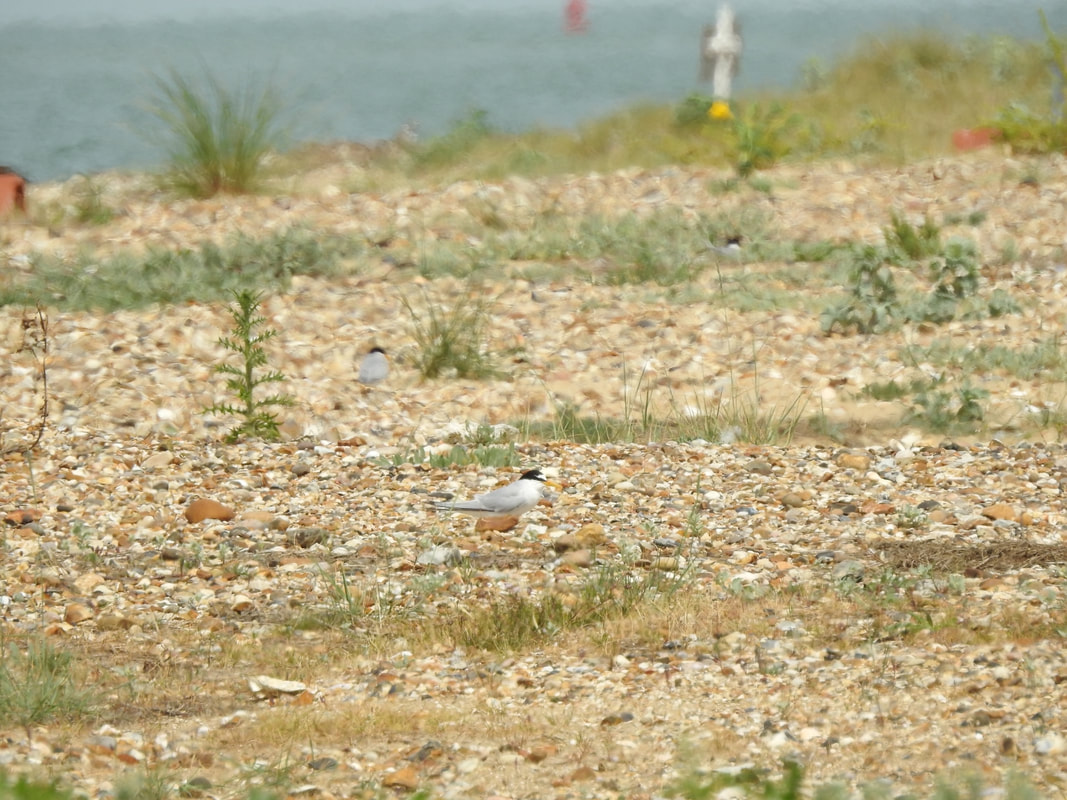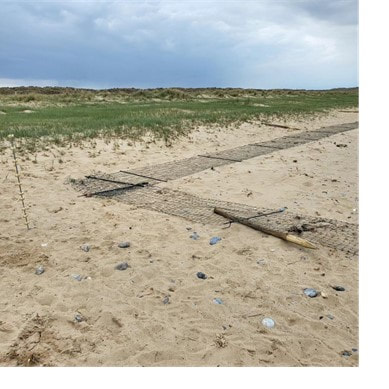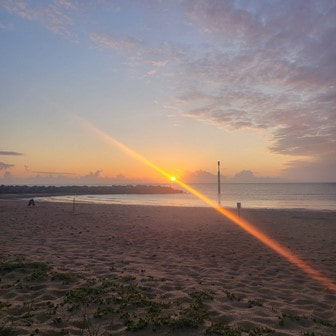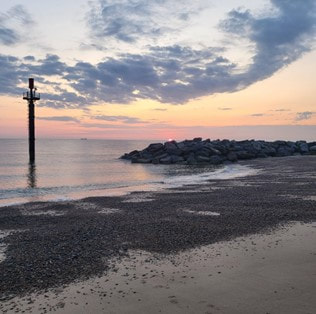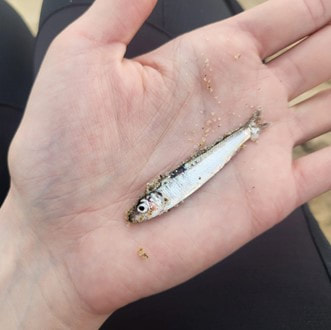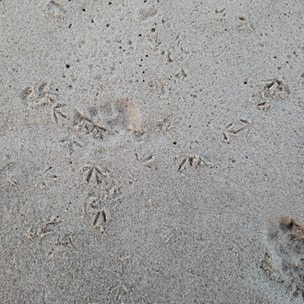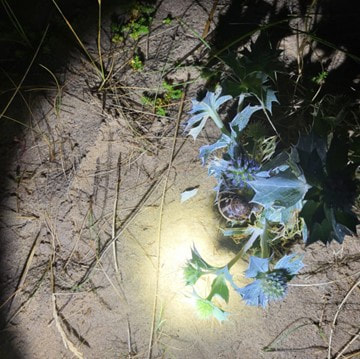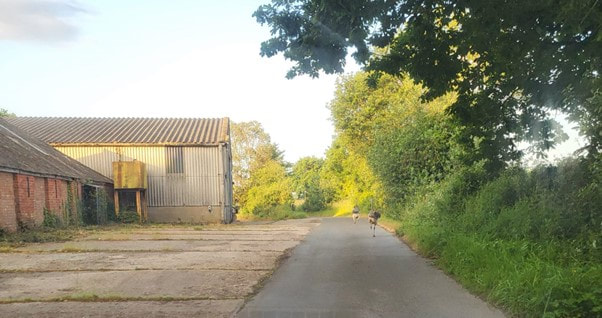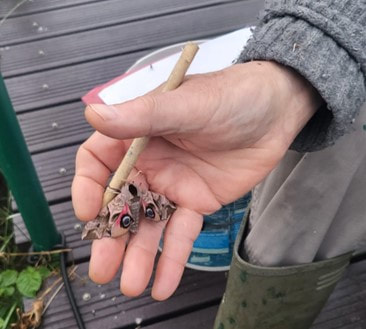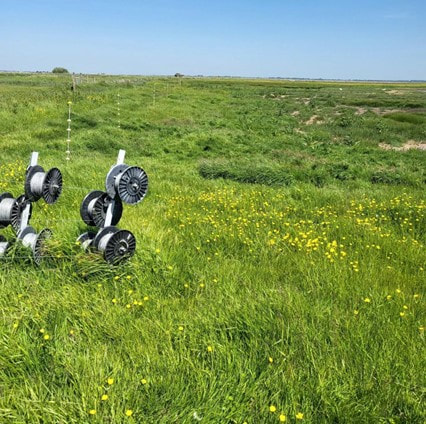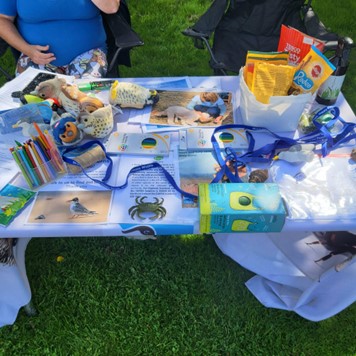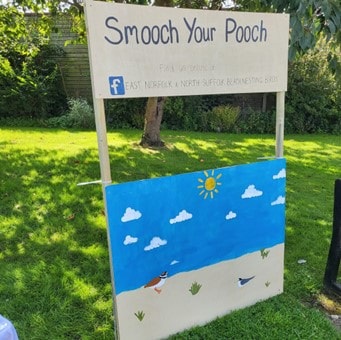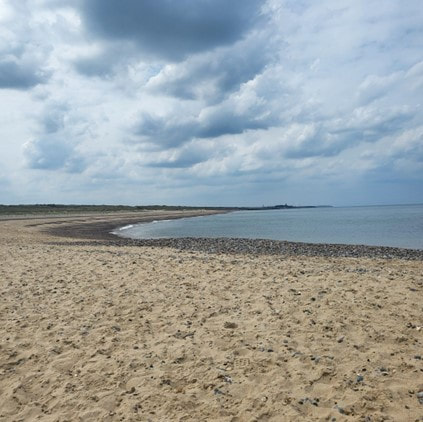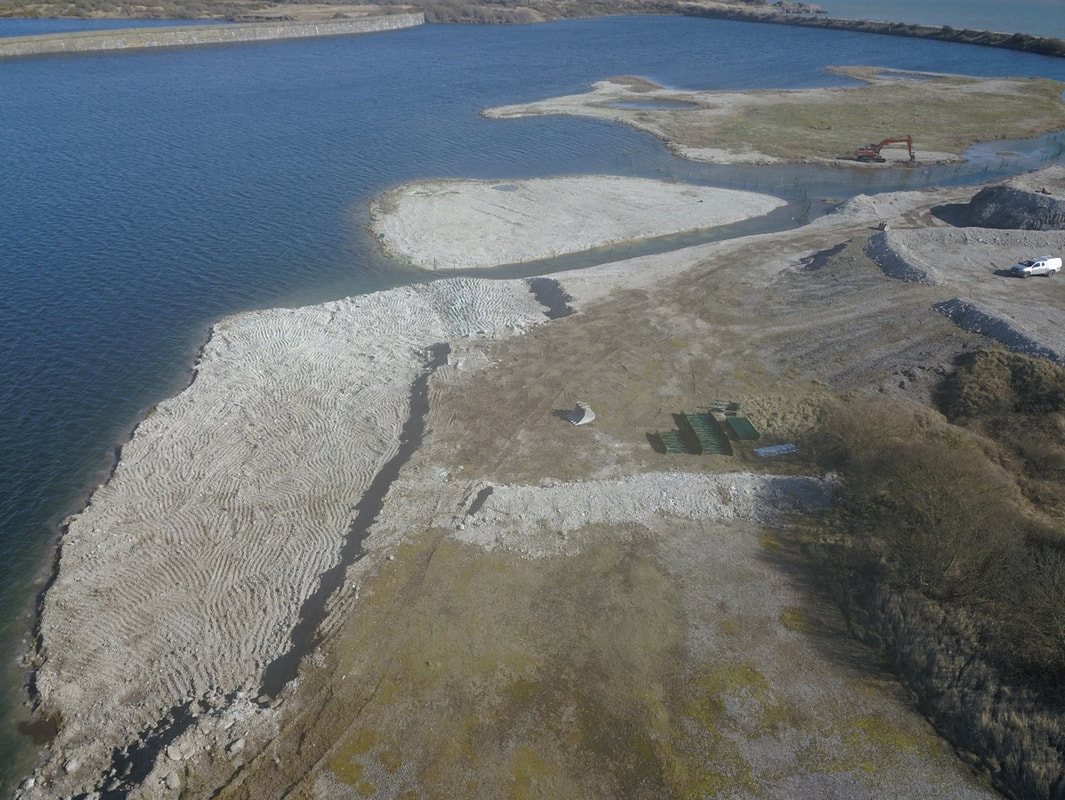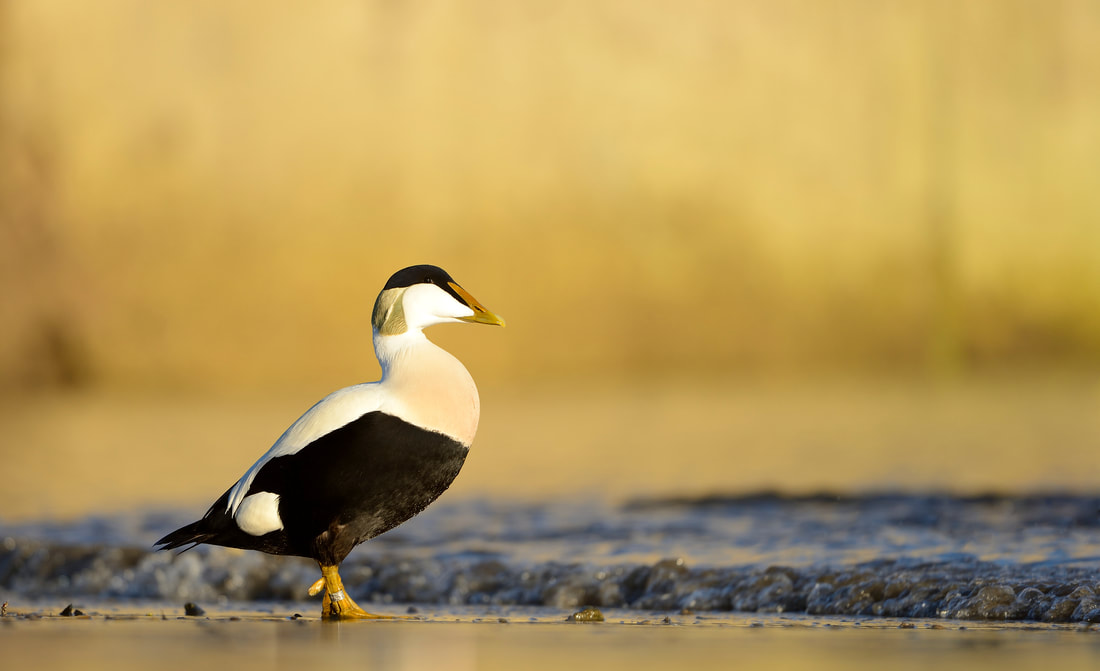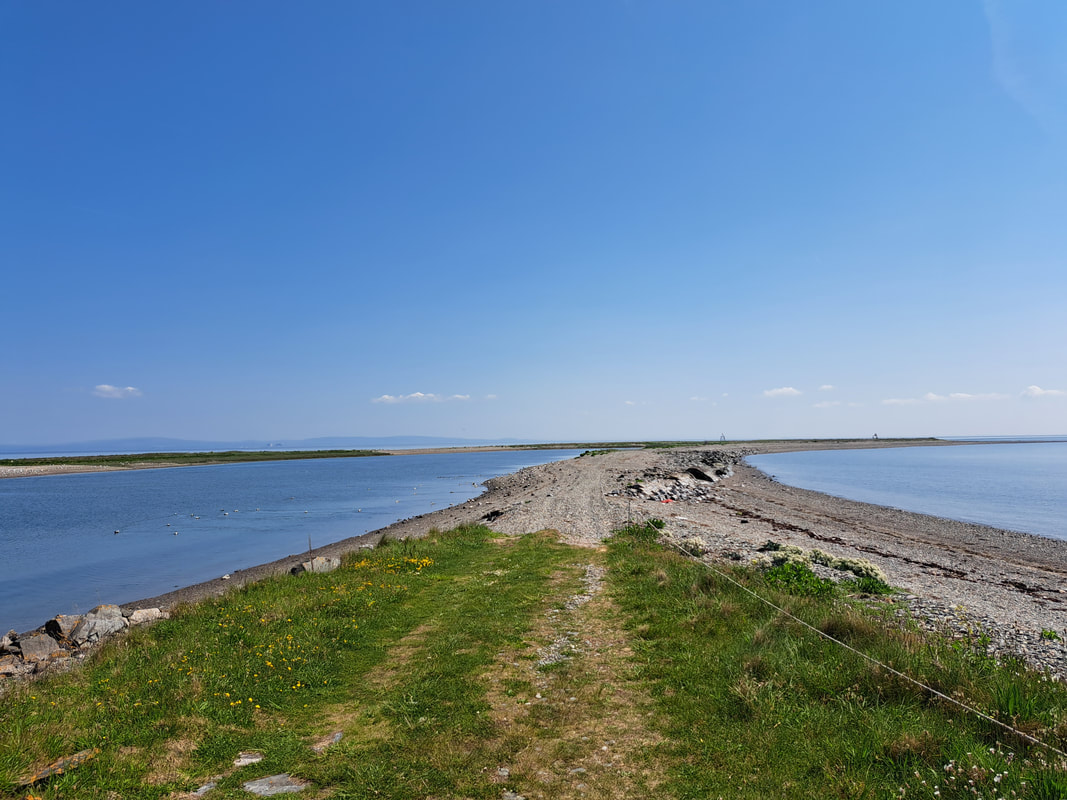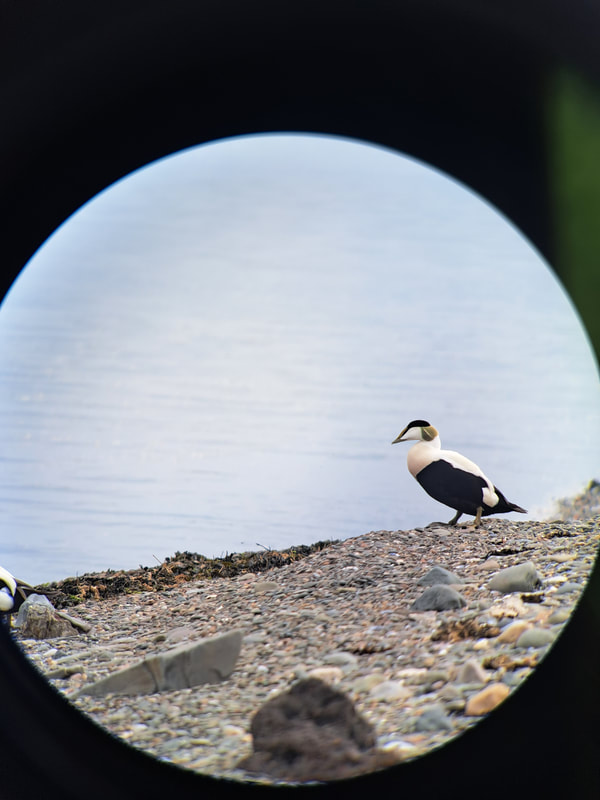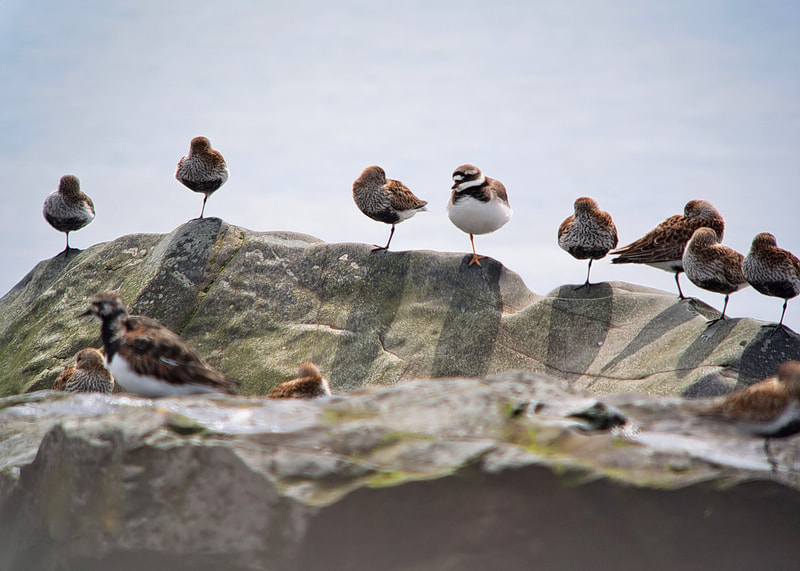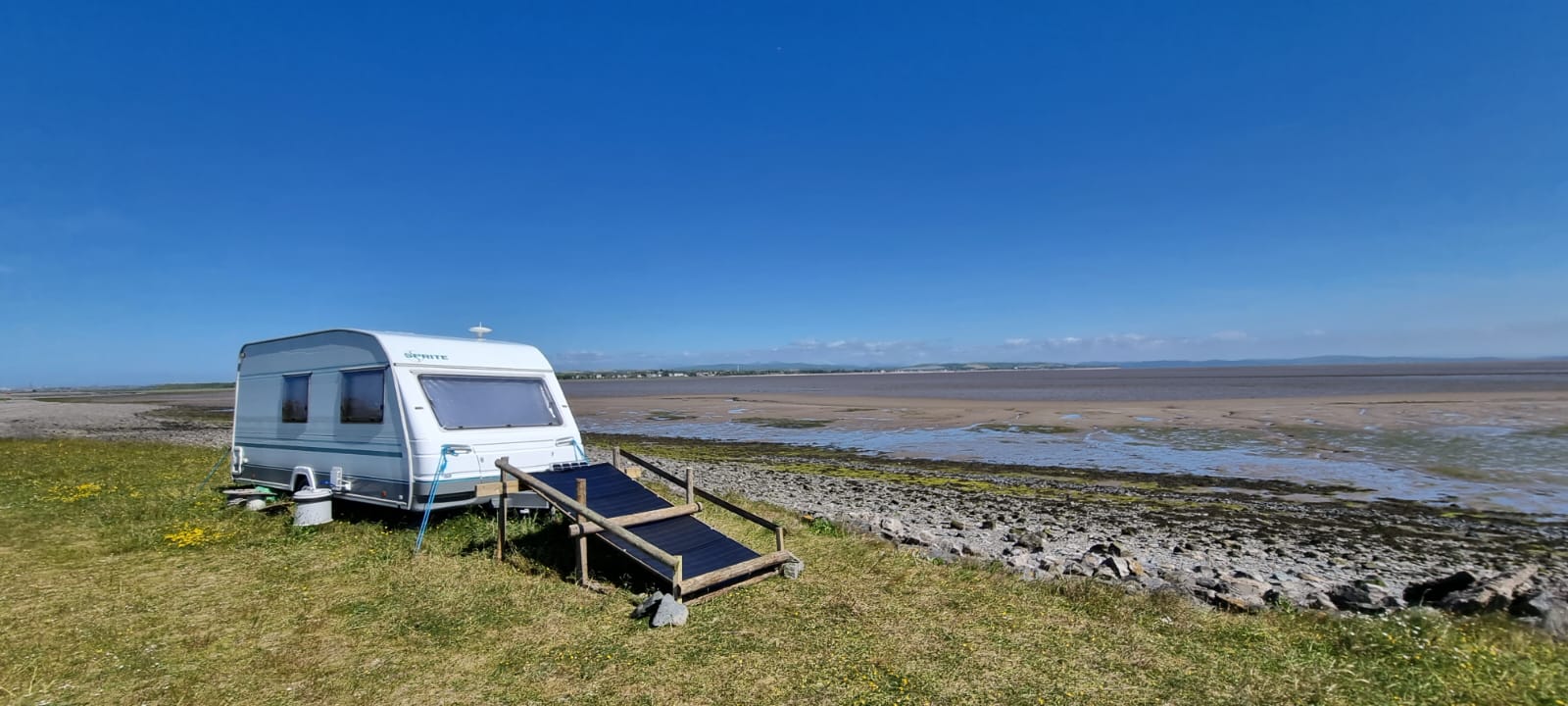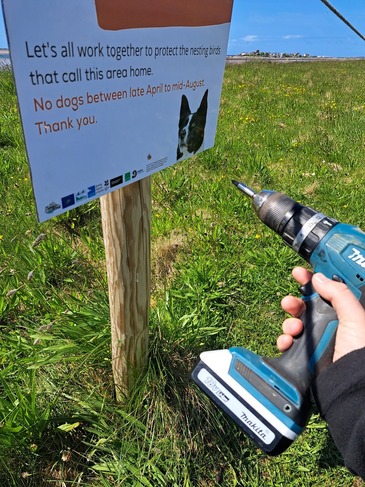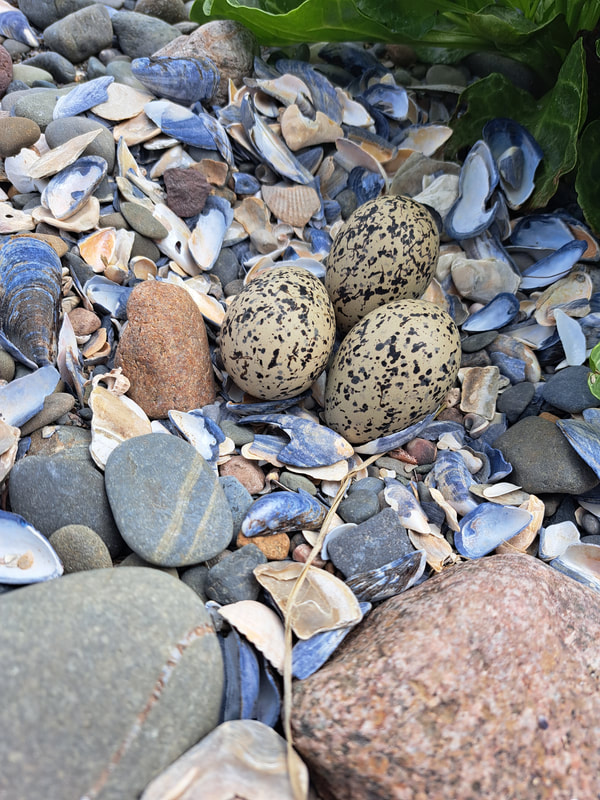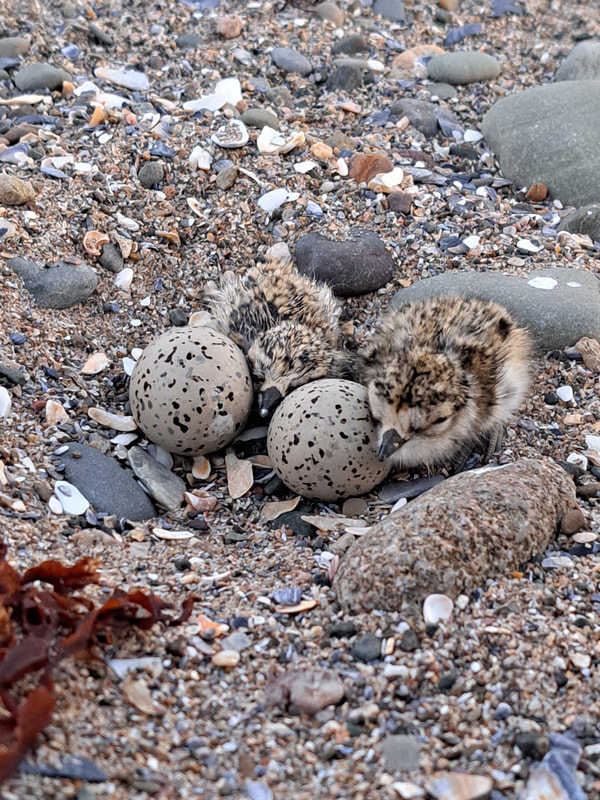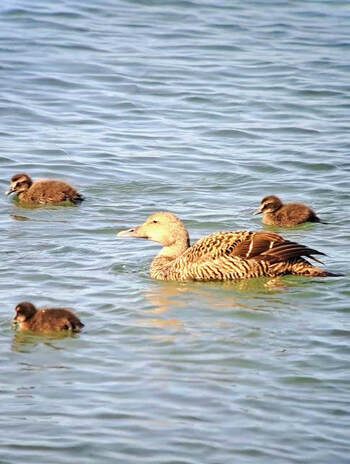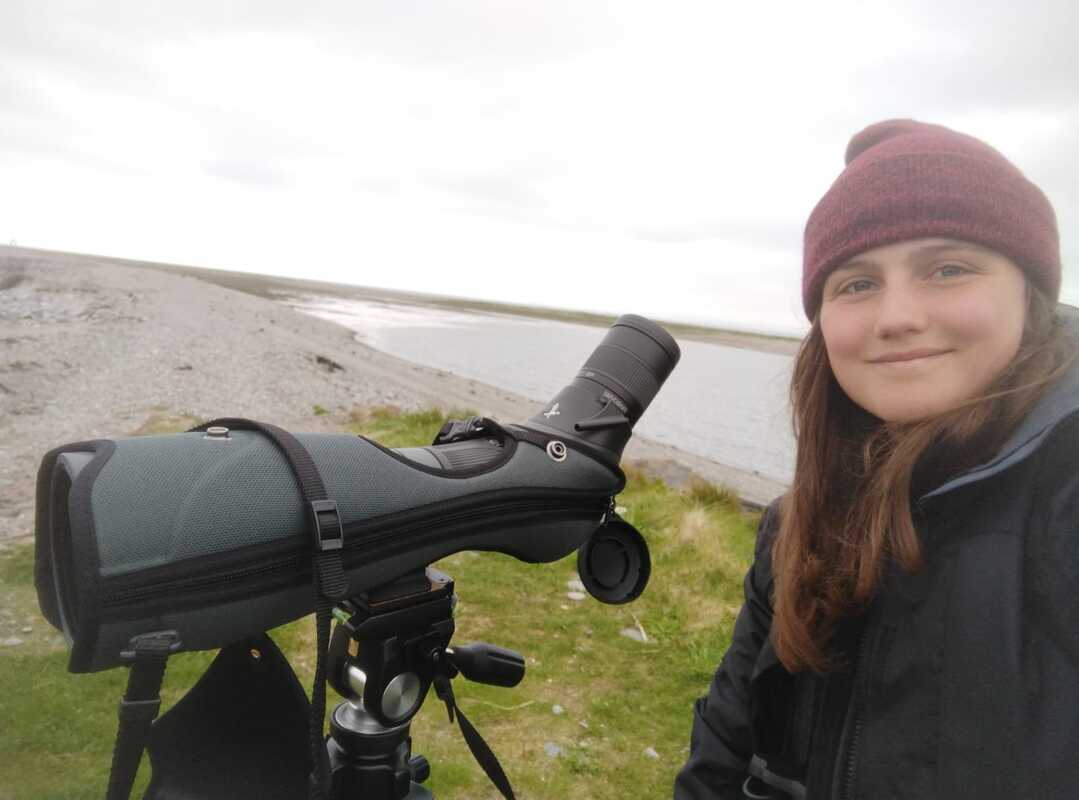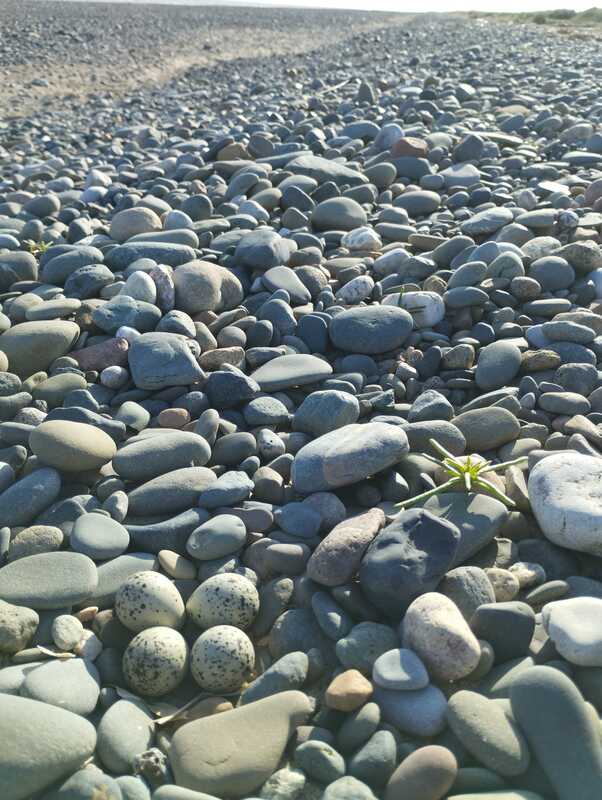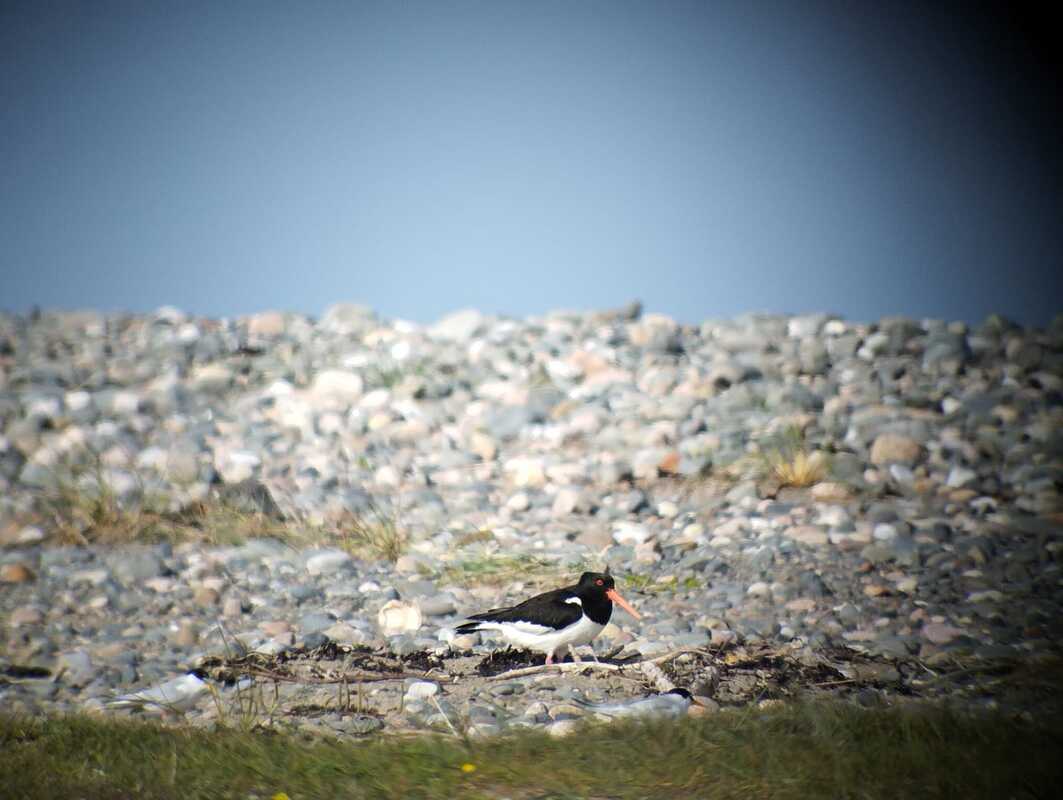|
Blog by Kieren Alexander, RSPB Site Manager for Old Hall Marshes It was a fantastic year on the newly created beach at Horsey Island. For those not familiar with this project, this was the creation of a new beach for little terns and other beach nesting birds to breed on, using 50,000 cubic metres of sand and shingle from the major channel deepening project carried out by Harwich Haven Authority. Along with providing breeding habitat for little terns and other beach nesting birds, the aim of the recharge scheme was also to help reduce erosion of the saltmarsh at Hamford water. This protected habitat, is vital for carbon storage, aiding in the fight against climate change. The project also assists in providing a natural wave break for the wider Hamford Water area, absorbing the energy before the waves reach the mainland and reducing pressure on the surrounding seawalls. Nesting on beaches, Little Terns are highly vulnerable to disturbance and erosion exacerbated by rising sea-levels throughout their breeding grounds. The project at Horsey Island, raises the height of a shingle beach out of the reach of the highest tides and hopefully secures this nesting location for the next 60 years. Below is a little video on how we created this new beach: Now in its 3rd year and approaching its 3rd breeding season, it is time report back on the results from 2023’s breeding season; in total 28 pairs of Little Terns successfully raised 42 chicks during this year’s breeding season at Horsey Island in Essex. Figures indicate that this year has seen the highest number of chicks taking to the skies since 2006. The site has also provided valuable habitat for other species including a Common Gull which fledged one chick this year from Horsey and is a rare occurrence in Essex and is possibly the first to have bred in Essex. This is an incredible result and a real success for all the organisations involved in the management of the beach from Tendring District Council, who warden the site and the wider Hamford water embayment, the landowners and HHA and the Environment Agency who helped fund the work. What has also been fascinating is watching the sand and shingle evolve over the three years, this winter has been a fascinating one for the beach, with a lot of strong north easterlies, the front edge of the beach has taken a lot of energy from the wave action and the higher-than-expected tides. Fascinatingly, in response to this and to maintain its stability beach and to absorb this energy, the beach has lowered and rolled back even further. Now that (hopefully) the strong storms are over, the relatively gentle wave energy should begin to pick up the height of the beach again as the crest of the beach will remain out of the water and shingle and sand will be picked up and forced up the beach. We will continue to monitor the beach both ecologically and geo-morphologically, with one final drone survey this Spring before we move to an annual monitoring drone flight to see how it is evolving over time and continued annual monitoring of the little tern population led by Tendring District Council and with the assistance of the landowners. In case you missed it, here is the link to first part of Horsey Island Recharge Project blog, the second part, the third part and the fourth part. Video credits: Jim Pullen/RSPB
0 Comments
Thanks to Rebekah Wall, RSPB Little Tern Volunteer, for this lovely guest blog. Conservation is something you’ll commonly find on the news but is such an important topic for the generation these days. To take part in it is something even more important and wonderful. Conservation is my career path and to have the option to become a volunteer is very rewarding and has been something I have done since graduating from University. I applied to be a bird warden for the RSPB in April (2023) for something new to volunteer for, to improve my mental health, and to be more involved in the current need to support conservation and breeding opportunities for the Little Terns. To be given the opportunity to work amongst RSPB staff and experienced volunteers and to be working closely with the Little Terns, a thrill of excitement made me ecstatic, and I was looking forward to starting my shifts. As well as actually working alongside the Little Terns, the fences needed to be put up at Winterton-on-sea and at Eccles. Many volunteers popped up to help and it was interesting to talk with the new and experienced volunteers about what to expect from a shift and how to engage with the public and their dogs. During the induction, one of the staff spoke about the night shifts, the golden hour that we could witness, and the experiences we could obtain. Instantly I knew I wanted to do as many night shifts as I could, fitting it around my day job. I began my first night shift at 10 p.m. in the middle of June, wrapped up warm with many layers, thermals, waterproofs, a woolly hat, gloves, flask filled with hot coffee and snacks. Sitting in a camping chair can be very comfy until it gets very cold. Fortunately, blankets were available to use and sudden spurts of bats and moths flew over one's head and gave me a buzz, excitedly looking for more wildlife in the sky. The night shifts were so different from the day shift. As said by previous volunteers, you get to witness the golden hour which was so magical to see. You have to watch the birds wake up from their hiatus as they are always on the watch, protecting their eggs, chicks, and colony. To witness them fly up, fluttering over the sea and quickly in dive to catch any amongst the Clupeidae sp. to give their chicks the first meal of the day. Listening to their calls is so distinct, made my heart flutter. And the first time I saw a chick, my heart burst into happiness, knowing for a fact this is the environment I want to be in. How small they are! Little balls of speckled fluff. During the night shifts, you literally have to be the watchful eye, a protector to help the success of the breeding Little Terns. To physically chase away the predators with a shaker (a bottle with small stones and pebbles in it). Whether they are flying raptors and four-legged mammals - muntjacs for the eggs, foxes for the eggs and chicks, a few domestic cats now and again, and the occasional squirrel. Finishing a night shift every morning is very different from the last. One morning, driving on my way home from a night shift I happened to come across a situation quite bizarre. Two Rheas were running on a country road right in front of me in the car. Completely bewildered I thought I may have been over-tired. I managed to snap some shots and pass them on to the Little Tern group. A few hours later, I was informed that they were from a farm and had escaped, I saw two of the twelve that were roaming around Norfolk. As well as strange occurrences, I was able to witness a couple of moth traps being unveiled! The beauty of the elephant hawk moths to the peppered moths was amazing and enticing to watch. Working as a bird warden is so much more than looking after the birds, you are able to gain transferable skills, work as a team, get the chance to take part in other events such as witnessing kestrel chicks being ringed, working on RSPB sites such as Berney Marshes engulfed in magical greenery and wildlife, many bird species and mammals and public days such as ‘’Smooch your Pooch’’ promoting dogs on leads during the breeding season of the Little Terns. Being given the chance to take part in volunteering alongside the RSPB for the past five months has been an amazing opportunity that I have thoroughly enjoyed and look forward to the next season.
Blog by Dave Blackledge - Site Manager, RSPB Cumbria Coast Reserves RSPB Hodbarrow, on the side of the Duddon Estuary in Cumberland, is the site of an important colony of Sandwich, Little and Common Terns. They breed on land formerly occupied by one of western Europe’s largest iron mines and began nesting there as the mines closed over 50 years ago. Predator fencing and warden protection has seen increasing numbers of seabirds breeding on the island created on limestone slag with vital protected space at a premium. The Life on the Edge project has been helping create more space for our colony to expand. At the start of the project in 2020, we constructed a new island and carried out work to increase the size of the existing one, giving us around 0.75 ha of extra breeding habitat, protected by anti-predator barrier fence. Work has continued this winter to further increase the opportunities for breeding seabirds by creating a third island of 0.25ha. and provide a line of marker buoys along our boundary with the neighbouring caravan park to reduce the incidence of boat disturbance near the islands. The coastal iron mines were enclosed by a seawall at the start of the 20th century to protect works from flooding and thousands of tons of limestone slag from the nearby smelting works were dumped within the wall, providing an ideal substrate for nesting terns when the works were flooded following closure in 1968. Island creation on site therefore centres around lowering, moving and cutting off areas of the slag bank to create disturbance free areas. This increased space has already begun to prove beneficial to a number of species. As terns, Black-headed Gulls and wildfowl began to increase behind the initial predator fence deployed in 2016, Little Terns in particular found it difficult to find space away from other species with their tendency to nest in a more dispersed pattern to other species. The first island created in 2020/21 has attracted most of the 60 or so pairs of common terns to breed creating space for little terns to expand. This season we have a peak of 53 pairs of little terns – a record for the site, and young are beginning to hatch at the time of writing. With HPAI hitting some Sandwich Tern colonies hard, we are delighted to have 596 pairs currently hatching young on site – a little down on recent years, but probably expected with a presumably reduced UK population this year. Creating several islands also has the advantages of reducing the chance of predation – any breach of the predator fence would only allow foxes access to one area of the colony – and separating the colony into areas where interaction and movement will be restricted which may help prevent the spread of HPAI throughout the entire site. Eiders too, have benefitted greatly from the works. With historical averages of around 5 nests, increased breeding space and predator fencing has increased this to 73 pairs, with several large creches seen escaping over the sea wall to the estuary in recent weeks. Along with 2 pairs of Arctic Terns, 12 pairs of Oystercatchers, 9 pairs of Lapwings and 4 pairs of Ringed Plover the busy breeding islands are proving a valuable haven for seabirds along the Cumbrian coast. Previous blogs on RSPB Hodbarrow
Part 1: NEW ISLANDS FOR SEABIRDS AT HODBARROW Part 2: DOING A GOOD 'TERN' Part 3: HODBARROW TERN TRENDS Part 4: 2022 HODBARROW SITE PREPARATIONS Blog by Rebekah Watts, Cumbria Wildlife Trust Foulney Island Warden Why is Foulney important? Foulney Island Nature Reserve is comprised of a shingle spit within Morecambe Bay SPA connected (via manmade causeway) to the mainland. The reserve is home to several wintering bird species such as knot, dunlin and wigeon and is an important breeding location in the spring and summer for shorebirds such little terns, Arctic terns, ringed plovers and oyster catchers as well as other bird species such as pied wagtails, meadow pipits, eiders and skylarks. The terns that choose Foulney as their nesting grounds are protected species and they are in decline. It is so important to offer them a safe place to lay their eggs and raise their chicks as they are easily disturbed by human recreational activities, dogs, aerial and ground predators (such as sparrowhawks and foxes). Their nests are vulnerable as they nest where there are no visual obstructions to allow them to watch for predators but this means that they nest out in the open, making their chicks and eggs susceptible to predation. Their eggs are at risk of being trampled by people, as their camouflage is very successful. Terns nest on shingle and require close access to the sea to feed. That’s what makes Foulney the perfect place for them. Terns return to the same colony to breed in most cases and Arctic tern travel 22,000 miles on their migration. This special little island hosts these incredible birds and it needs to be protected. Breeding Season Preparation Preparation for breeding season on Foulney Island is an intense operation! For this year, the main island was turf stripped to provide extra habitat for shore nesting birds. This new shingle area was fenced off to protect the birds using it to raise their young, from ground predators such as foxes, rats and hedgehogs. Turf stripping involves the removal of the top layer of vegetation and in this case, changing the habitat to shingle. The vegetation was then buried beneath the layer of shingle. This area has been used this season by eiders, ringed plovers and oyster catchers who’s chicks began hatching recently, proving the success of the change in habitat! Skylarks and meadow pipits also benefited from the ground predator protection in this area as they too nested here, inside the fence on the edge of the shingle where vegetation remains. In preparation for the electric fence the vegetation was strimmed. Insulator stakes were knocked into the ground and electric wires passed through the insulators. To prepare the public, signs were put up in the carpark, the causeway and on the island stating that dogs are not allowed and explaining why, and the rope fence to fence off the beach area, where the birds nest, was put up. Lastly, the caravan was put in place. Then it was time to begin surveying! Warden life on Foulney Hi! I’m Bekka, and I’m this year’s seasonal warden on Foulney island nature reserve. This beautiful little island reserve is home to many species of breeding birds over the summer including oystercatchers, ringed plovers, eider ducks and little terns. In addition to the birds, the island is home to and visited by mammals such as grey seals and voles; as well as insects such as butterflies and moths. Sharing an island with such beautiful wildlife is an amazing experience. Being the only person living on an island might seem lonely, but I have plenty of fishermen to chat to, and of course the wildlife! During the season I have been lucky enough to experience finding nests and watching parents lovingly incubate their eggs, and have watched eggs hatch into beautiful chicks. Watching eider females with crèches of up to 30 ducklings swimming across the water and oyster catcher parents leading their chicks across the shingle are sights that will never get old. As the warden, I spend my time monitoring eggs, chicks and adults, checking trail cameras and engaging with and educating the public. Explaining to the pubic the importance of reducing disturbance to nesting birds is an extremely vital part of my job. The natural threat response in nesting shorebirds is triggered by the public and their recreational activities, especially when dogs are involved. When threatened, shorebirds are forced to flee, leaving eggs and chicks vulnerable to predation, and forcing the adult bird to expend energy which should be used in incubation or finding food. In the worst case, an out of control dog can kill shorebirds, which unfortunately occurred on Foulney this season. It is so important that our shorebirds are protected. We all have our part to play! Now that chicks are hatching we are well into the season. Fingers crossed that all goes well here on Foulney island! My name is Jessie, and I’m this year’s seasonal warden at Cumbria Wildlife Trust’s South Walney Nature Reserve. South Walney is a beautiful reserve that I feel very lucky to be calling home this summer, and it’s a home I share with a lot of amazing wildlife. Whether it’s intently scanning our shingle beaches for the nests of ringed plover or oystercatcher, counting the hundreds of eider duck that roost here at high tide or chatting to visitors, there’s plenty to keep me busy here. I’m employed by Cumbria Wildlife Trust, but my job is a part of the Life On The Edge (LOTE) project, an EU funded project lead by the RPSB. LOTE is dedicated to understanding, monitoring and improving the quality of coastal habitats, with a particular focus on oystercatcher, ringed plover and little tern. Engaging with visitors and reducing the impact of visitor disturbance on nesting birds is one of the most important parts of this, which can include keeping people away from the most important nesting areas and strict rules on dogs. All of our breeding shorebirds are very vulnerable to disturbance, as although their incredibly camouflaged nests provide excellent protection from predators it also means that people don’t notice them and can very easily step on them. Sadly, dogs are also a threat – even the most well-behaved dog will be seen as a predator by a nesting bird, and repeated encounters with dogs can cause birds to abandon their nest. In the worst cases, out of control dogs can actually attack or even kill wild birds, although this is rare. All breeding birds are protected under UK law, so we all have a duty to do our bit to protect them where we can! Here at South Walney we don’t allow any dogs (except assistance dogs) and there is no public access to the beach, and this goes a long way to protecting the beautiful wildlife that calls this place home. The best part of my job has to be nest surveying. I have to scan far ahead of me on the beach for any signs of nesting or territorial birds, and be incredibly careful where I walk to avoid stepping on the very thing I’m looking for – eggs perfectly disguised as pebbles. These may be the eggs of oystercatcher – unmistakable with their black and white plumage and vivid orange bills – or of ringed plover – looking a little like a forgotten member of the Incredibles with their distinctive black mask. Nest finding requires patience, a keen eye and keeping on constant alert for the slightest movement or the faintest alarm call from a nearby ringed plover. Although I have to say oystercatcher alarm calls are never exactly faint, and often I find myself being shouted at by an oystercatcher 200m away that I hadn’t even noticed yet! In the last week I have been lucky enough to find 3 little tern nests. Little terns are the UK’s smallest breeding tern, with a bright yellow bill and a very distinctive chirping call. Like many seabirds, they migrate from Africa to Europe every spring to breed, and will return there again in the autumn. I’m very excited to have them breeding here at South Walney and will be crossing my fingers for a successful breeding season! Stay posted for regular updates from me and if you’re visiting you may see me out and about – come and say hi! |
Archives
April 2024
Categories
All
Photo credits: Oystercatcher by Katie Nethercoat (rspb-images.com)
LOTE Logo credits: Saskia Wischnewski |

